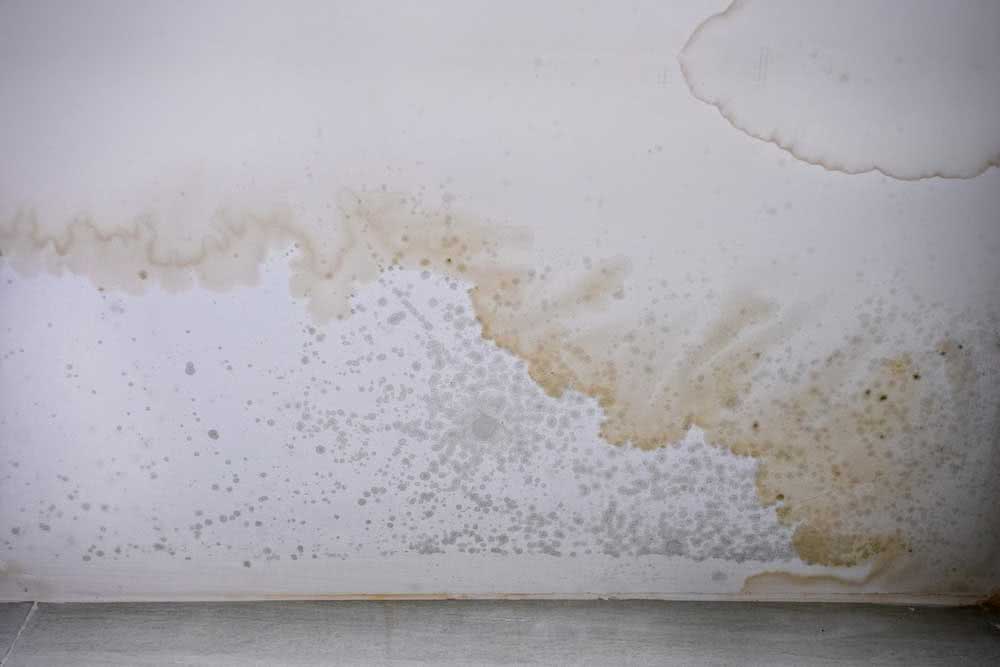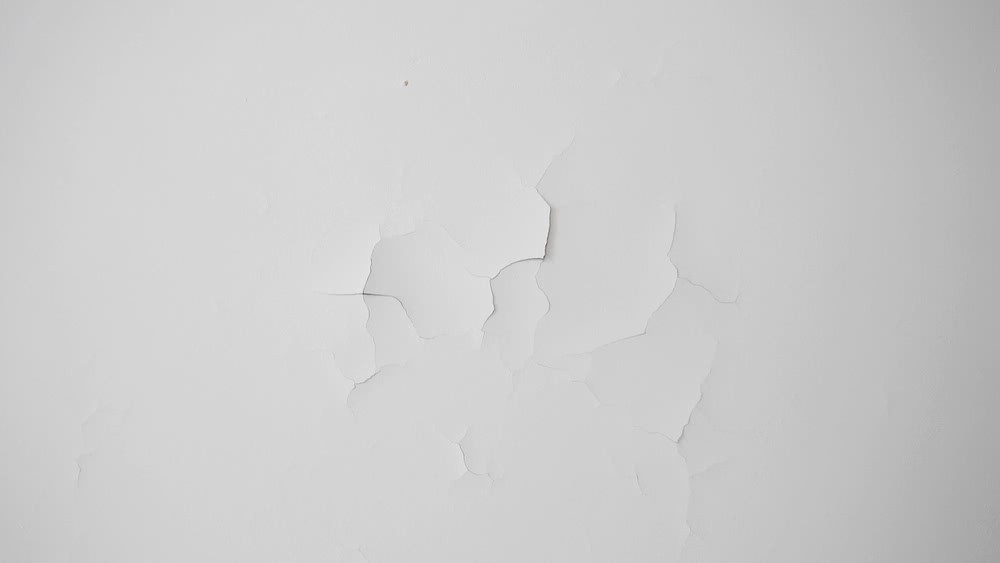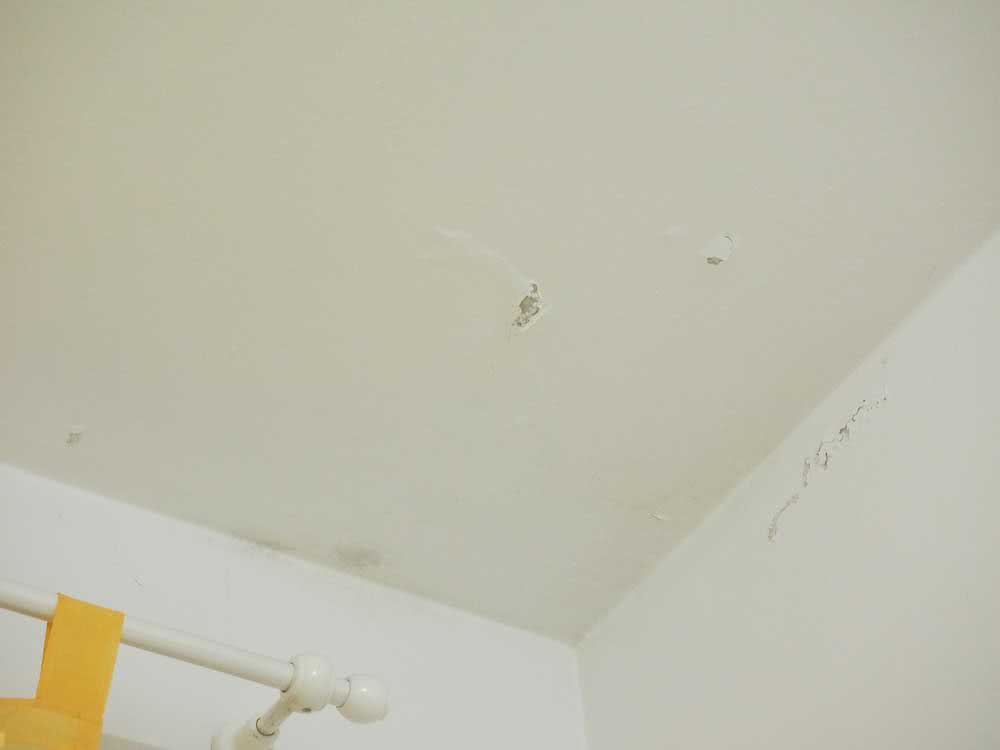Infiltration on the wall is something that can happen in any home, sooner or later, whether you like it or not.
And when that moment arrives, there is no use crying or complaining. The only thing you can do is look for the solution to the problem, which, in this case, comes down to understanding how to stop the infiltration in the wall.
The first step for this is to identify the causes, and only then to assess which is the best solution.
In this post we brought tips and super important information to help you solve this annoyance. Just take a look!
Causes of infiltration in the wall

The infiltration in the wall can have different origins and making this identification is the best way to end the disorder once and for all. Below are some of the possible causes of the infiltration.
Cracks and cracks in the slab
When the slab is not well waterproofed, it is common for rainwater to find its way through cracks and small cracks.
And then you’ve seen it, right? The water begins, little by little, to run down the structure, reaching not only the ceiling, but also the walls.
To identify this type of infiltration, just look at the location of the moisture. If it focuses on the upper sides of the wall, then most likely it does come from the slab. In this case, the tip is to bet on a good waterproofing product for the place.
However, it may also be that the infiltration originates from the roof. Broken, cracked or cracked tiles are another source of moisture. Here, there is no other way but to climb on the roof and check tile by tile. If you notice any defects, have them repaired immediately.
Rainwater straight on the wall
Another very common infiltration factor is rainwater that hits and runs directly on the wall.
This can happen in houses where the protective eaves are small or non-existent, leaving the wall exposed. Or, even, when there is no gutter to receive the rain.
In this type of infiltration, moisture stains usually appear in the middle of the wall, branching through the lower and upper sides and corners.
The tip here is to perform a good waterproofing of the wall, in addition to removing the previous paint layers and also taking the opportunity to install a gutter or maybe even extend an eave over the wall.
Leaking pipes
Environments such as bathrooms, kitchens and service areas tend to suffer from another type of infiltration: that which comes from pipes.
And here there is no other way but to break the wall and make the necessary repairs.
Lack of ventilation
The lack of ventilation inside the house is another reason that can cause moisture stains on the wall. In this case, it is not specifically an infiltration, although the marks are similar.
The accumulation of moisture inside the environments is what causes this problem.
The super simple solution is to let the house “breathe” for at least an hour during the day. Open the doors and windows, as well as the curtains, since it is so important when the air is in the sunlight.
From the floor to the walls
If none of the above fits the type of humidity that appears in your home, then you are probably dealing with an infiltration that originates in the soil.
This type of infiltration is common when waterproofing is not carried out on the beams and structures of the building.
As a result, the moisture that is concentrated on the floor literally ends up climbing the walls. To solve this type of infiltration is a little more complicated, since it involves the structures of the house.
The first way would be to try to reach this structure and carry out the waterproofing, however, it is important to have the support of a civil engineer to monitor the process and ensure that there will be no damage to the structure.
Another way, this time simpler, is to seek the waterproofing of the existing floor. You can choose a type of waterproof floor, such as porcelain tiles, for example. And, at all costs, avoid extremely permeable floors, such as concregram, for example.
The neighbor is to blame
Finally, one of the most stressful situations that can happen is to discover that the infiltration, in fact, does not come from your house or land, but from your neighbor.
It could be an uneven floor, it could be a crack in the wall, it could be a leaking pipe, in short, it could be any number of things. Even those who live in an apartment can also suffer from this problem, and it is very common that the cause of the infiltration comes from the plumbing of the upstairs neighbor.
In these cases, the only solution is to seek a respectful dialogue and propose a solution to the problem together.
How to stop infiltration in the wall

After finding out where the infiltration comes from, it’s time to get your hands dirty and settle the problem as quickly as possible
This is because humidity, in addition to compromising the structures of the house, such as walls, floors and roofs, can also cause damage to furniture and appliances and, on top of that, compromise the health and quality of life of residents, since humidity and consequent proliferation of mold and mildew is responsible for innumerable respiratory symptoms, ranging from allergic attacks, such as rhinitis to more severe conditions, such as asthma and bronchitis.
Therefore, there is little care. Check out the tips to stop the infiltration on the wall:
Waterproof
The first care is to pass a good waterproofing product to control the infiltration. For slabs, the use of asphalt blanket is recommended. As for beams and buckets, use asphalt paint, remembering that this procedure is indispensable at the beginning of the construction of the house.
The walls must be waterproofed with their own additives mixed with the plaster and the roughcast.
Remembering that it is super important to remove all the paint and plaster until it reaches the masonry.
With the exposed wall it is possible to see cracks and cracks more easily. The next step is to seal these possible cracks, using a product popularly known as crack seal.
The next phase consists of redoing the plaster using waterproofing additives and finally finishing the recovery of the wall with thin mass and painting.
Renew the painting
After the waterproofing step, it is interesting to renew the painting. To do this, you must choose the paint of your choice and apply it on the clean wall.
Always prefer paints with anti-mildew and anti-humidity action.
Clean the walls
The walls must be cleaned to remove mold and mildew stains. The best option, in this case, is a mixture of bleach with water, in the proportion of one to three, respectively.
Spend this solution on the wall, wait a few minutes, then finish cleaning with a cloth moistened with water only.
This procedure should be performed mainly when the cause of the infiltration is not in the wall itself, but in the ceiling or on the floor.
Invest in quality coatings
Another very common option is to use ceramic tiles to contain moisture on the wall. This may be a good solution, but only after you’ve done the necessary repairs.
Under no circumstances apply any type of coating without first discovering and solving the cause of the infiltration. It is a waste of time and money, since the infiltration will continue to exist.
And that is exactly where the danger lives: the hidden infiltration can gradually erode the structures of the house causing even greater damage.
Therefore, before opting for the use of coatings, make the necessary repairs. The coating will act as a wall protector, preventing new moisture points from appearing, but for this you must invest in quality coatings that do not absorb water.
Infiltration on the bathroom wall
The infiltration in the bathroom wall almost always involves problems with the plumbing or if you live in an apartment, this problem can come from the neighbor.
When in doubt, call the union to help you assess the cause of the problem. If leakage is found in the pipes, then it is best to break the wall until it reaches the leak and replace the pipes.
The leak may also be coming from the hitch of the taps and the toilet. Take a good look at everything before you break the wall.
How to prevent infiltration in the wall

With the infiltration problem solved, all you want most in this life is never having to go through it again. And for that it is necessary to carry out periodic maintenance to ensure that the problem does not come back. Here are some tips to prevent infiltration into the wall:
- Make periodic visits to your roof and observe the condition of the tiles and the slab. Whenever you notice damaged parts, have them serviced.
- Keep the house open and ventilated for a few hours a day to prevent moisture from accumulating.
- Check for leaks or other small points of moisture, especially in the region near the water pipes.
- Observe your home’s water consumption. If you notice a sudden increase in the bill it is quite possible that your home is leaking.



